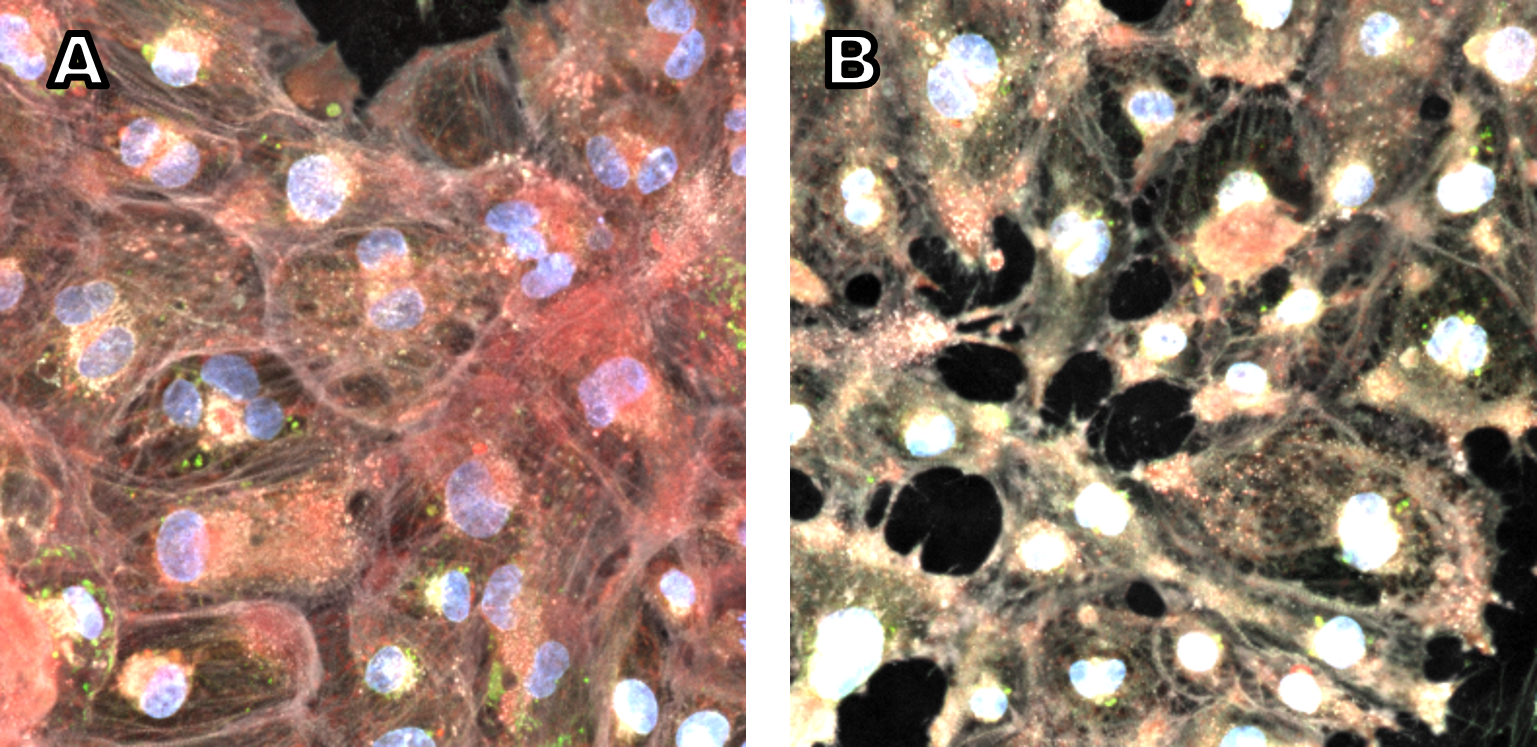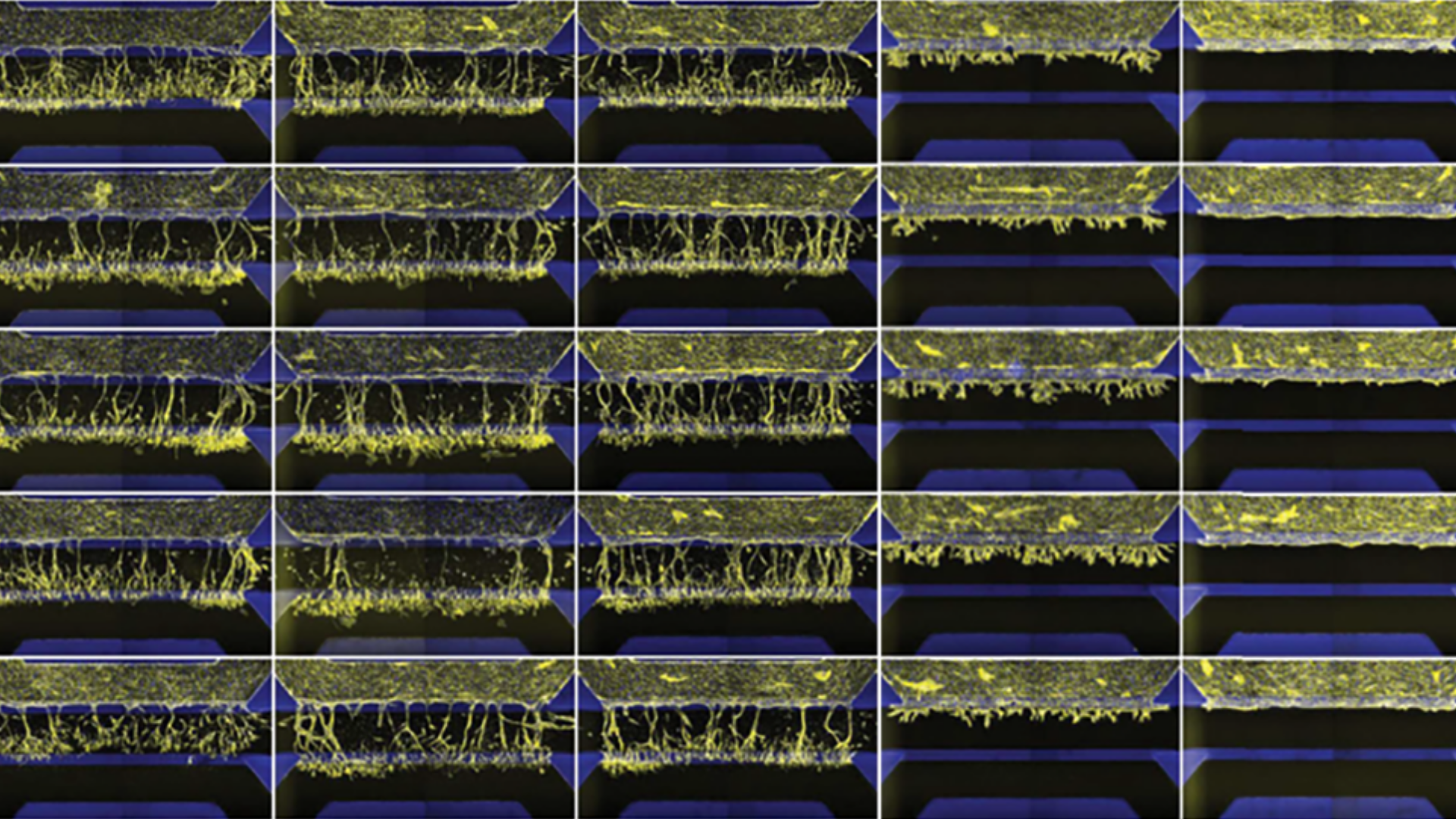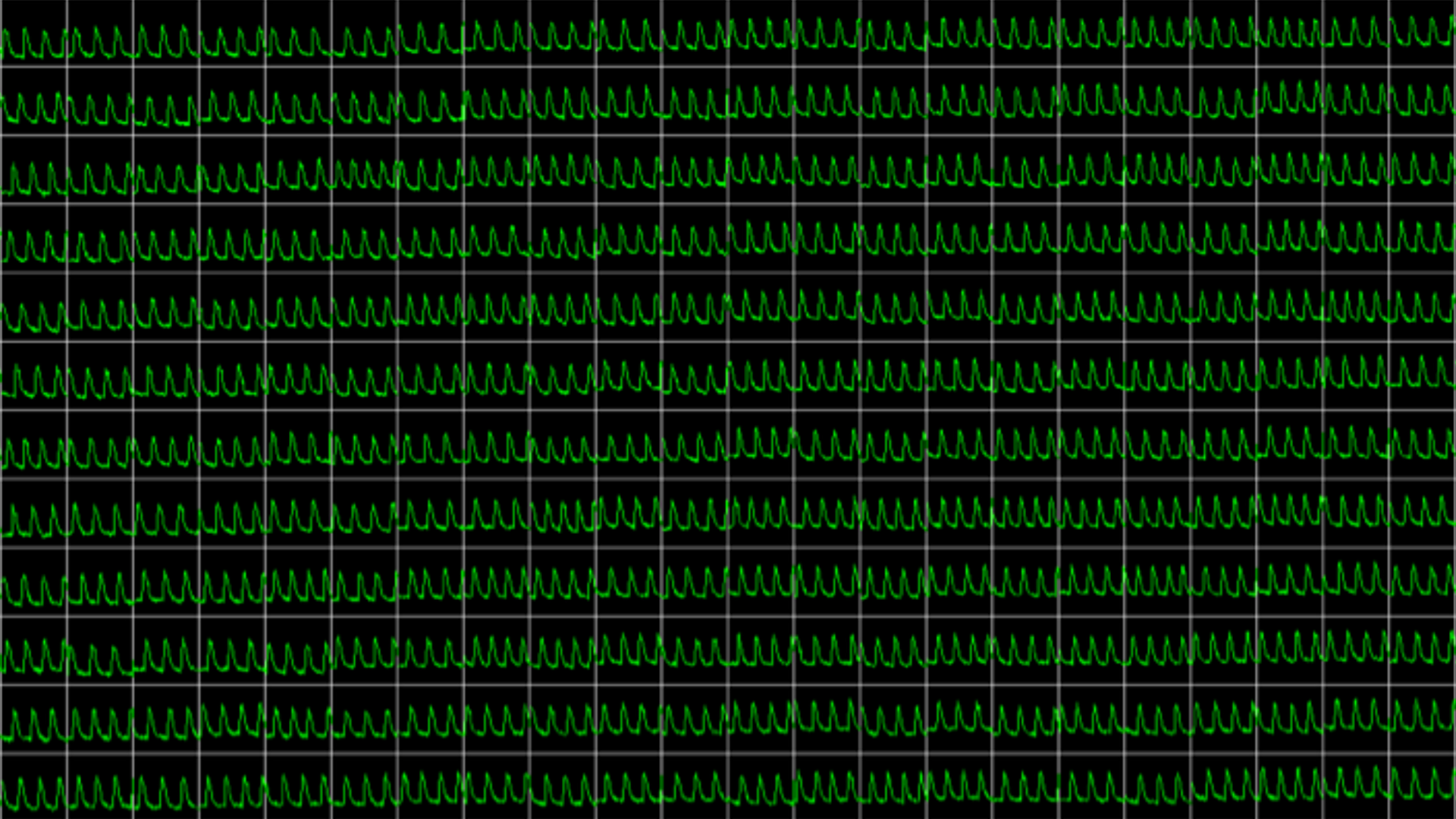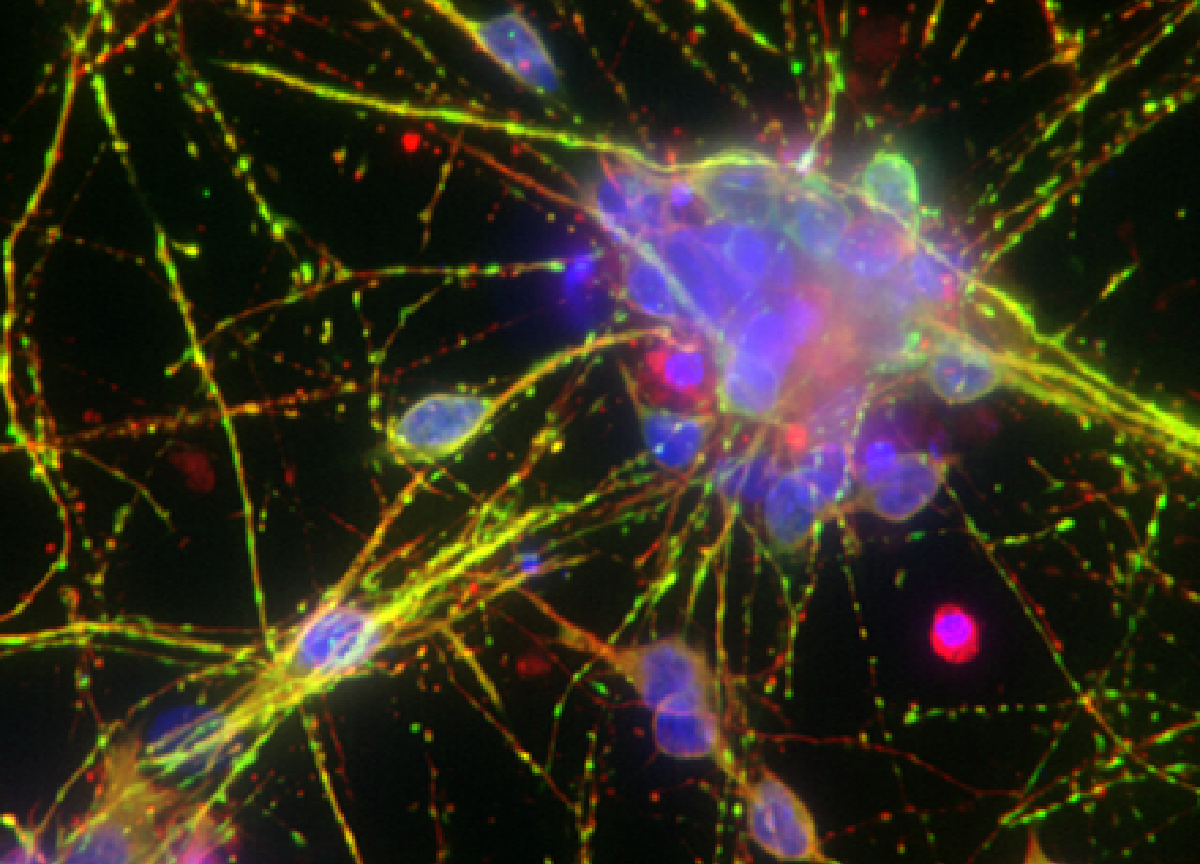Cell Painting
Cell painting is a versatile, fluorescence high content imaging-based technique designed to deliver in-depth, unbiased insights into the effects of therapeutic candidates on cells without prior assumptions.
By incorporating induced pluripotent stem cells (iPSCs), this method gains added clinical relevance, allowing for more accurate modeling of human disease conditions and human biology.

- Scalable and clinically relevant assay
- Data-rich profiling
- Agnostic and holistic approach
Do you want to explore how this assay can help you progress your drug discovery programs?
Applications
The strength of cell painting lies in its capacity to produce extensive datasets encompassing thousands of metrics and creating a distinct phenotypic signature, which is then compared to a reference library of compound fingerprints. It is widely utilized in drug development as this method can support determining mechanisms of action (MOA), phenotypic drug discovery, profiling toxicity, and target identification.
Using cell painting to distinguish between different cell types
Different cell types have different morphological fingerprints and as such can be distinguished with cell painting. This can, for example, be used for creating profiles of cell co-cultures, selecting subpopulations, or confirming consistency between cell batches.
After the desired culturing and treatment period, cells are stained with specific and stable dyes, imaged in an automated confocal microscope, and then quantified with proven analysis platforms.
 Fluorescence micrographs of three human iPSC-derived cell types. From left to right: cardiomyocytes, astrocytes, neurons. Blue = nuclei; green = ER; grey = actin/Golgi/plasma membrane; red = mitochondria.
Fluorescence micrographs of three human iPSC-derived cell types. From left to right: cardiomyocytes, astrocytes, neurons. Blue = nuclei; green = ER; grey = actin/Golgi/plasma membrane; red = mitochondria.
Cell painting-based analysis of compound effects in iPSC-derived cells
Cell painting can be used to assess how drug candidates affect cell morphology and, with appropriate reference compounds, to classify these effects with regard to compounds' mechanism of action.
For example, by using known toxic reference compounds in parallel, therapeutic candidates can be assessed for their toxicity.
 Fluorescence micrographs of iPSC-derived cardiomyocytes. A) Vehicle control; B) 1 µM Cytochalasin-D (F-actin disruptor). Blue = nuclei; green = ER; grey = actin/Golgi/plasma membrane; red = mitochondria.
Fluorescence micrographs of iPSC-derived cardiomyocytes. A) Vehicle control; B) 1 µM Cytochalasin-D (F-actin disruptor). Blue = nuclei; green = ER; grey = actin/Golgi/plasma membrane; red = mitochondria.
 Principal component analysis-based clustering of iPSC-derived cardiomyocytes, treated with various reference (purple symbols) and test compounds (red symbols). Presented are the compounds at 1 µM and the first two principal components; highlighted are Cytochalasin D ("CytD") and vehicle control.
Principal component analysis-based clustering of iPSC-derived cardiomyocytes, treated with various reference (purple symbols) and test compounds (red symbols). Presented are the compounds at 1 µM and the first two principal components; highlighted are Cytochalasin D ("CytD") and vehicle control.
 Dose-response curve for iPSC-derived cardiomyocytes treated 24 h with Cytochalasin D, according to cell painting principal component 1.
Dose-response curve for iPSC-derived cardiomyocytes treated 24 h with Cytochalasin D, according to cell painting principal component 1.
Our work centers on a simple yet powerful premise:
When we combine deep iPSC knowledge, broad assay capabilities and a demonstrated ability to integrate the biology of human diseases into preclinical research, we can help drug developers make critical decisions earlier and with more confidence.

Study compound-induced effects on blood vessel formation
Assay
Evaluate and quantify the levels of clinically relevant biomarkers
Assay
Obtain real-time recordings of intracellular calcium fluctuations
Assay
Get in-depth and unbiased insights into the effects of therapeutic candidates on cells
Assay
Study drug-induced effects on contractility of cardiac or skeletal muscle cells
Assay
Determine the electrophysiological effects of your therapeutic candidates
Assay
Evaluate endothelial permeability in short and long term
Assay
Study drug-induced phenotypic changes in the cell model of your interest
Assay
Obtain precise information on compounds' impact on metabolic processes


